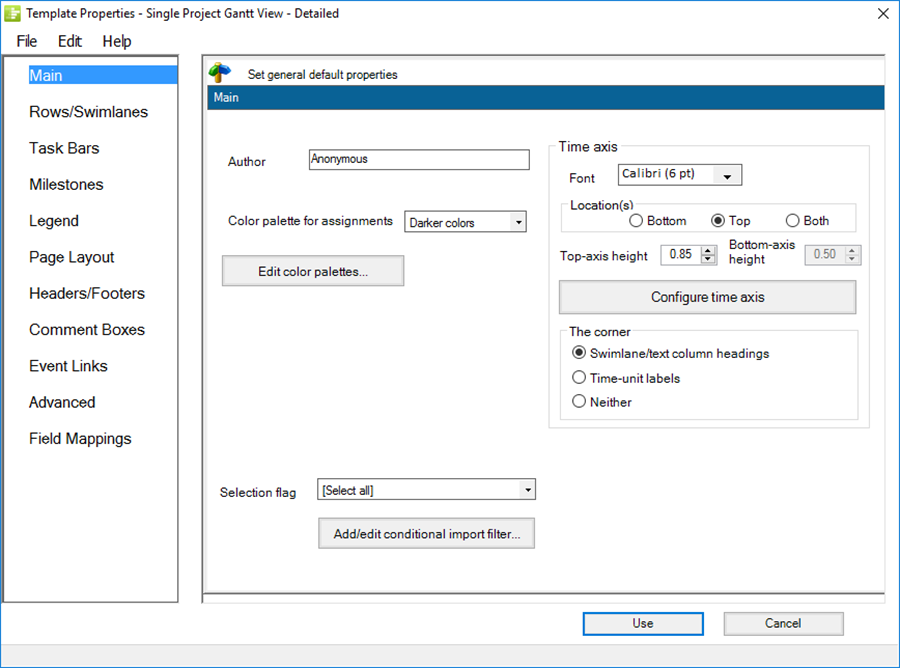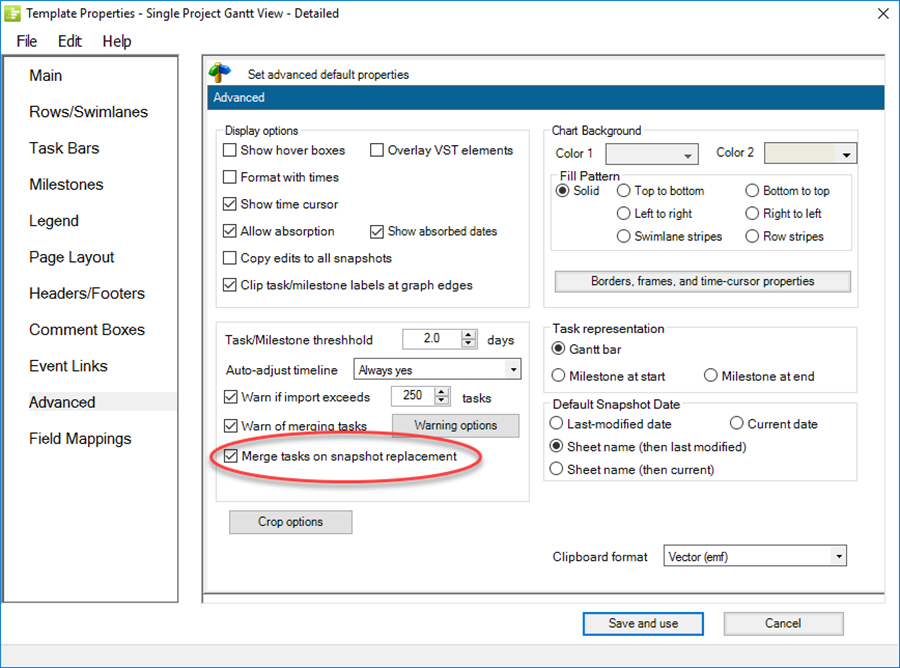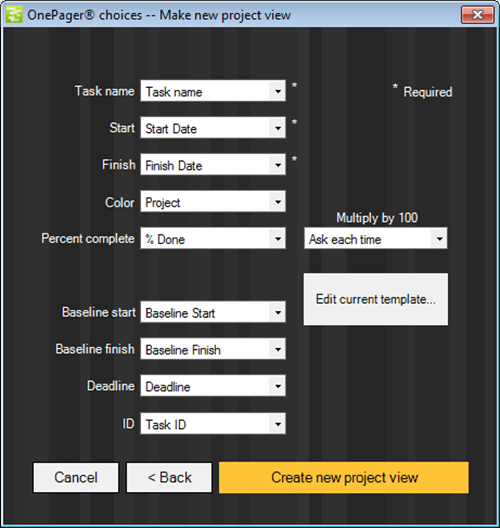Difference between revisions of "Template Only Features for Version 6.0 (OnePager Express)"
(→Other Columns Tab) |
(→Other Columns Tab) |
||
| Line 71: | Line 71: | ||
<center>[[File:X53-24_2_1-53-(4)-01062015.png]]</center> | <center>[[File:X53-24_2_1-53-(4)-01062015.png]]</center> | ||
| − | + | 4) For more detailed usage information on the '''Field Mappings''' Tab see the article at this link: [[Field Mappings Tab for OnePager Express for Version 6.0 | Field Mappings Tab for OnePager Express]] 21.1.16.1-60 | |
| − | + | ||
| − | + | ||
| − | + | ||
| − | : | + | |
| − | + | ||
| − | + | ||
| − | + | ||
| − | + | ||
| − | + | ||
| − | + | ||
| − | + | ||
| − | 6 | + | |
| − | + | ||
| − | + | ||
| − | + | ||
| − | + | ||
| − | + | ||
| − | + | ||
(24.2.1-60) | (24.2.1-60) | ||
Revision as of 21:09, 20 February 2017
Contents
About Template Only Features
Because the Template Properties and Project-View Properties (PVP) forms are similar, this section only covers the areas of the former that are different from the later. If you are unclear on the differences between a template and a PVP, please review the explanation in the Core Concepts (Portal) 4.0-60 and Templates versus Project Views 4.3-60 articles.
2) You should familiarize yourself with PVP form before reading this section. Please see the article at this link: Editing with the Project-View Properties form (Portal) 21.0.1-60 for more information and access to more detailed articles.
A Couple of Notes On Templates
1) Permanent Template Chronicle Graphics, Inc. ships OPX with one pre-defined permanent template that you cannot accidentally delete. The permanent template has the word Permanent in its name. The permanent template cannot be modified hence all the control features on each tab are disabled (ghosted).
2) Metric versus Non-Metric Within a template there are settings which are measures that must be considered when building the project view graph.
- a) These include the height of individual rows, the height of the percent-complete bar within a task bar, and the like.
- b) OnePager supports two measurement conventions: English (inches) and Metric (centimeters). For convenience you can identify a Metric based template because the word (metric) is included in the title. And these two sets of templates are separated by default into English and a Metric subfolder of the default templates folder.
3) In addition to the English and Metric folders in the template folder there is a Legacy folder containing templates from versions of OPP prior to version 5.3.
4) Ideally, you will use one of the templates provided you one time and then from there you will customize your project using your own customer template.
- a) Once a project view is customized it may be transformed into a template using the Copy to Template button on the ribbon's Home tab.
- b) Our templates will give you a starting point, but to maximize your efficiency, we recommend you learn how to create and update your own templates.
Main Template Tab
1) The Main tab of the Template Properties form differs slightly from the PVP form. The template does not have entry positions for the Start date, and End date, or project view title, because these dates are systematically produced by OnePager based on the earliest start date and latest finish dates in your data. The Title is something you designate as you create the new project view with the OnePager choices (OPC) form.

Advanced Template Tab
2) The Advanced tab is shown below. Most of these parameters in the template are identical to those appearing in the PVP form.

- a) In the template’s Advanced tab there is no Lock background checkbox in the Display options group. This is an option available after the project view is created.
- b) One key difference between the Template Properties form and PVP form is the ability to use the template to configure a multi-project import The next sub-section explains this further.
- c) For more information on creating multi-project project views please visit these two articles: Basic Workflows (Portal) 7.0.1-60 and Creating Various Multi-Project Views with OnePager Pro and Express (Portal) 8.0.1-60.
Merge tasks on snapshot replacement (see screenshot above)
3) Checking this checkbox in the template puts any project views created with this template into the multi-file multi-project mode. This mode is specifically designed to support users who want to create multi-project project views from several independent Microsoft Excel plans. It allows OnePager to recognize data as coming from more than one unique file and combine that into your OnePager project view, hence the merge reference.
4) This is an advanced feature and when used, OnePager needs you to create a Task ID column with uniquely numbered tasks and milestones that can be imported from the various Microsoft Excel plans. This is necessary so that OnePager uniquely recognize each row in each separate file.
- a) A simple example shows how this checkbox works. Suppose that the first Microsoft Excel plan contains tasks A, B, and C and that the second plan contains tasks D, E, and F. After making a new project view from the first plan, you open the second Microsoft Excel plan and update the project view in Replace Snapshot mode. If the checkbox is checked, the project view will now contain tasks A, B, C, D, E, and F. If the checkbox is not checked, the project view will now contain only tasks D, E, and F.
- b) Once you adopted this scheme for the project view being created, it is not possible to update the project view in the future in the default single-file single-project mode.
Other Columns Tab
1) The new Field Mappings tab in the Template form for OnePager Pro looks like this:
- a) The eight dropdown lists shown in the form above are the most common fields that our customers tell us they use.
- b) The new Field Mappings tab in the Template, which is also available in the OnePager Pro PVP form, provides a convenient and shortcut way to change the meaning of the source plan fields as they will appear in the project view.
- c)) Each dropdown list contains the source file fields by data type available for OnePager Pro and Express. For example, in the Basic Fields group, the Critical-path column dropdown contains Boolean and Numeric fields from Microsoft Project. For the dropdown lists in the Date Fields group, the lists are composed of date type fields used by Microsoft Project.
2) The Field Splitting group in the Field Mappings tab of the OnePager Pro Template form works in the same way as it did in the Other Columns tab of previous versions. See the article at: Splitting and Parsing Columns-OnePager Express 24.5.1-60 for more information.
3) Additionally, you may change the standard Microsoft Project source plan usage for any of the fieldss mentioned in the Date Fields group shown on the right side of the Field Mappings tab. This is useful if your standard field usage differs and you want to avoid having to constantly make the changes on the second page of OPC form shown below:

4) For more detailed usage information on the Field Mappings Tab see the article at this link: Field Mappings Tab for OnePager Express 21.1.16.1-60
(24.2.1-60)